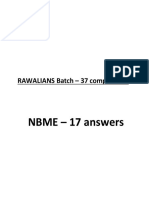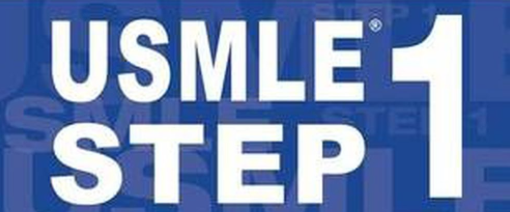
Start studying NBME 17. Learn vocabulary, terms, and more with flashcards, games, and other study tools. NBME 17 Answer key.pdf - NBME 17 answers BLOCK 1 1B 2B 3E 4C 5A 6D 7A 8B 9E 10D 11A 12B 13A 14A 15B 16B 17C 18B 19F 20C 21D 22B 23A 24B 25E 26F 27F 28B NBME 17 Answer key.pdf - NBME 17 answers BLOCK 1 1B 2B 3E. NBME Answers & Explanations — Updated daily. Share email twitter ⋅ join discord whatsapp Free 120 NBME 24 NBME 23 NBME 22 NBME 21 NBME 20 NBME 19 NBME 18 NBME 17 NBME 16 NBME 15 NBME 13 ⋅ Step 2 CK Free 120 Step 2 CK Form 6 Step 2 CK Form 7 Step 2 CK Form 8 home login register ⋅ contact ⋅ leaderboard links news. Ahhh I went down 11 points on NBME 17 from 16. I went from high 230s, to high 220s. I blanked on so many potentially easy things. Anyways here are most of them. Any help would be appreciated as I take the exam in less than a week Guy lifting weights suddenly experiences painful swelling right inguinal area. Picture of resected part of small.
| * NBME 17,plz help and give explanation,tks!! | | #806492 | | susanusmle - 05/03/15 05:53 | 40.
A new compound is taken up by bacterial cells. No energy is necessary for uptake, and the compound is not concentrated in the cell. Which of the following best describes this mechanism of transport?
A)
ATP-dependent active transport
B)
Carrier-mediated diffusion
C)
Group translocation
D)
Phosphorylation-linked transport
E)
Proton-gradient-mediated transport
43.
An 80-year-old woman is being evaluated for suspected temporal arteritis (TA). Her erythrocyte sedimentation rate (ESR) is 100 mm/h. Treatment of TA involves the use of glucocorticoids, which could have serious adverse effects. The pretest probability for TA is 50% in this patient. In the evaluation of TA, ESR has a sensitivity of 99% and a specificity of 60%. Based on the results of the ESR testing in this patient, which of the following is the most appropriate next step in management?
A)
Additional testing to confirm the diagnosis of TA
B)
Corticosteroid therapy, since the diagnosis of TA has been established with 99% certainty
C)
Elimination of TA from further diagnostic consideration
D)
Repeat ESR; if again positive, corticosteroid therapy
E)
Repeat ESR; if normal, additional testing to confirm the diagnosis of TA
I select E,and it's wrong
39.
A 62-year-old woman with recurrent pulmonary emboli comes to the physician for a follow-up examination. Physical examination shows no abnormalities. Laboratory studies show a prothrombin time of 12 seconds. Warfarin therapy is begun. Which of the following clotting factors is the first to be decreased by 50% after the initiation of therapy?
A)
V (proaccelerin)
B)
VII (proconvertin)
C)
VIII (antihemophilic factor)
D)
XI (plasma thromboplastin antecedent)
E)
XII (Hageman factor)
C is wrong
14.
A 26-year-old woman comes to the physician 5 weeks after the birth of her first child. She worries constantly that the infant is ill and wakes him 10 to 14 times every night to make sure he is well. She has had no crying spells or problems with appetite. She is worried that she will infect the infant with her germs and washes her own hands 30 times per day. For 2 months prior to the delivery, she worried about people breaking into her house and checked the lock on the front door three to four times every night. She is not breast-feeding. Which of the following is the most appropriate pharmacotherapy?
A)
Alprazolam
B)
Haloperidol
C)
Lithium carbonate
D)
Methylphenidate
E)
Phenelzine
F)
Sertraline
B is wrong,i cannot understand this ,what's the diagnosis ?
18.
A 63-year-old woman is brought to the emergency department because of a 2-day history of fever, abdominal tenderness, and painful urination. She appears agitated. Her temperature is 38.8°C (101.8°F). Laboratory studies show a leukocyte count of 14,000/mm3. She is admitted to the hospital. Two hours later, the nurses note that she has torn up four breakfast menus because she found them to be too confusing. She is highly educated, and her husband says that she does not behave this way at home. Which of the following is the most likely cause of this patient's current mental status?
A)
Amnesia
B)
Delirium
C)
Dementia
D)
Mild cognitive impairment
E)
Occult cerebral infarction
why C is wrong ?
8.
A 34-year-old man is evaluated after becoming lightheaded after running 12 miles of a marathon on a hot day. His pulse is 130/min and his blood pressure is 80/60 mm Hg. Which of the following changes in his autonomic nervous system most likely occurred?
Sympathetic Efferent Activity Parasympathetic Efferent Activity
A) ↑ ↑
B) ↑ ↓
C) ↔ ↑
D) ↔ ↓
E) ↓ ↑
F) ↓ ↓
anybody can explain this one?thanks soooo much !!
27.
A 14-year-old boy is brought to the physician by his mother because of daily headaches for 2 months. The headaches are described as a bilateral aching in the temples. His mother states that he also 'has not been himself' for the past few months. He seems more confused, often forgetting names, dates, and places, and he is clumsy with frequent falls. His school performance also has declined over the past quarter. Physical examination shows a broad-based, ataxic gait. He is alert and oriented to person, place, and time, but he is slow to answer questions. Chronic abuse of which of the following substances is the most likely cause of this patient's condition?
A)
Cocaine
B)
Ethanol
C)
Inhaled glue
D)
Methamphetamines
E)
PCP (phencyclidine)
| | Report Abuse |
|

+2
submitted by ∗bingcentipede(324), 2020-05-05T14:07:56Z

unscramble the site ⋅ remove ads ⋅ become a member ($42/month)
Nbme 17 Block 1 Explanation
G trsesenper teh arympir nteomrossoyas aear fo hte alipater oleb. The smte escbiserd a 69 cne)i( yaer ldo monwa wthi nyesros usessi no hte lfte s.ide Seh ptenrsse /w a Bbnkaisi gnis no het tfl,e eceesdrad ocmstai tanoesnis ni eht etlf foot, eptrgaheihsasa w(neh you d'awr a erbunm on nmes'ooes inks dan ehyt ncta' irpeerttn it) no the lpatanr srcefaus of het ,soet resaecedd ootnsiip sesne in teh e.ost heT tnsieqou sysa eethr is na teoumseda aear ni het leraecbr reoxct fo het hgtri meehehrisp.
Nbme 17 Answers Pdf

Nbme 17 Curve
I adh bltroeu thiw h,tis utb I ithkn sti' dgscibirne aessoyosontrm ceeaubs of eht esyorns erm.spolb otn'D esurdndatn het UNM olsine si().iakbBn er'Hes hwat dpaikWiie sasy: ni'Lseos tfaicefgn the rmipyar oetmonrayssso oxetcr eucorpd ercaahttsrccii smyomtsp il:uncgndi sraithapes,gahe ngit,reoasoesa hyihs,peaieshetm nad ossl fo ron,atiivb enppoorocpitri dan fnie tucoh casue(eb the drrtorideh- noeunr of teh aldneslcmiiae-ml whapayt noatcn epasnsy in eth ).xoetrc It cna osal epurodc icegtmel,enh fi ti ftcasfe eth mndatno-ionn ser.eephmhi iunsDetocrt of nmoardbn aear ,3 ,1 dan 2 utseslr in talrtenarolac paheehismhitsey nda 'sso.aeonritseg



